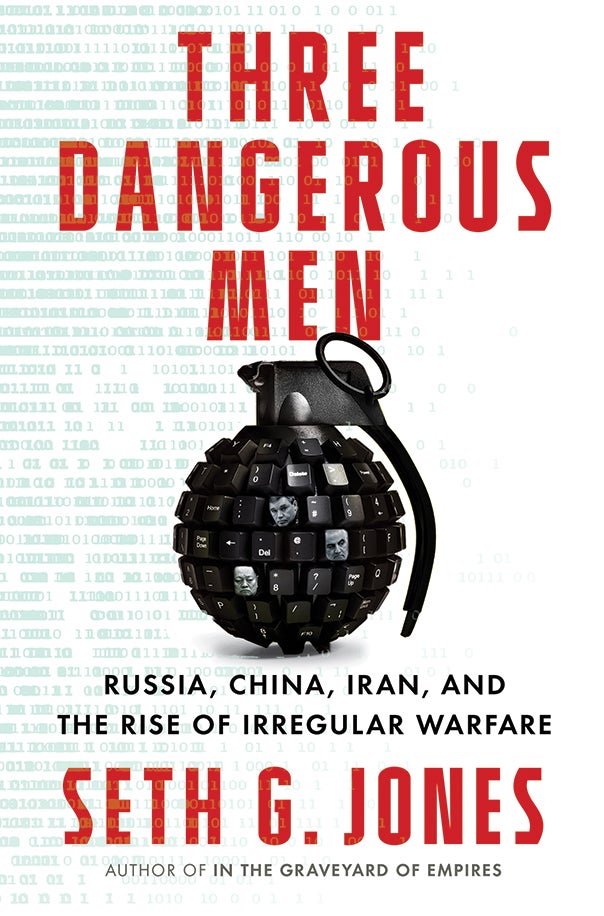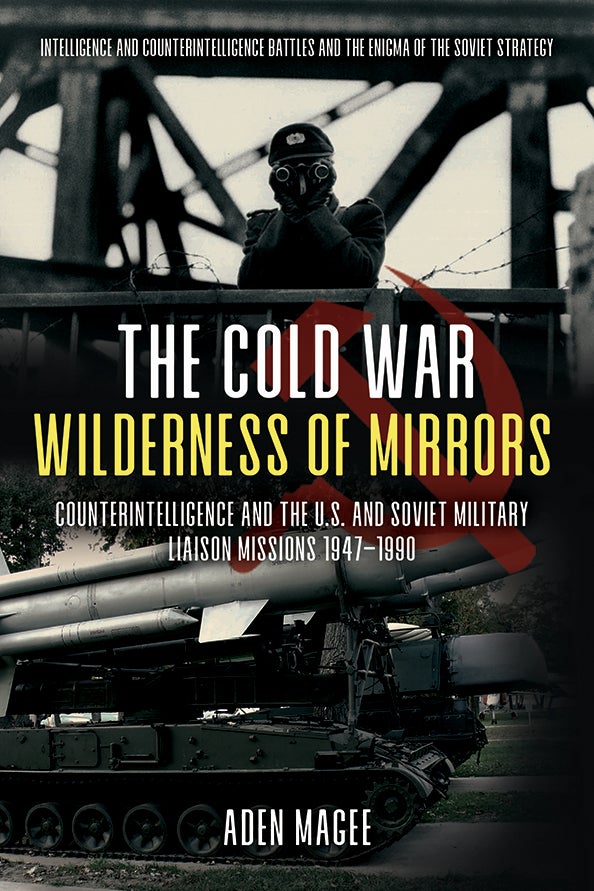March 2022 Book Reviews
March 2022 Book Reviews
A How-to for Managing in Uncertain Times

Risk: A User’s Guide. Retired Gen. Stanley McChrystal and Anna Butrico. Portfolio. 368 pages. $30
By Col. J.P. Clark
Retired Gen. Stanley McChrystal and Anna Butrico dedicate their book, Risk: A User’s Guide, to health care and other essential workers who serve despite dangers that cannot be fully eliminated. This acknowledgment of the COVID-19 pandemic is fitting as it highlights two major themes throughout the book.
The first is that everyone—not just military commanders, investors and gamblers—can benefit from a deliberate approach to risk. The pandemic has dramatically highlighted the extent to which life and work have always entailed risk.
The second major theme is that while we all may have become risk managers, the proper approach is not to be paralyzed by uncertainty and hazard. Instead, McChrystal and Butrico urge readers to take control, accept responsibility, and act. Individuals and organizations might not be able to eliminate external threats, but they can guard against the internal dangers of complacency, hubris and passivity.
Most readers will be familiar with McChrystal’s background as a special operations leader and senior commander, as well as his post-military career as the founder of the McChrystal Group consultancy, where Butrico is an associate. It therefore is not surprising that Risk is focused on providing practical advice rather than taking a theoretical approach.
The book is broken into three parts. The first gives a brief discussion of risk and introduces the Risk Immune System and its 10 “Risk Control Factors.” The 10 chapters of Part Two provide a fuller description of each of the factors. Part Three completes the Risk Immune System with a description of 11 “solutions” and a discussion of how they can be applied to address organizational problems.
Risk differs from most other approaches to the topic—including that currently used by the U.S. military—that assess risk as the combination of the probability that a given event will occur and the magnitude of the consequences if it does. The authors contend that this method often fails to yield satisfactory results. For instance, for many years there has been a wide recognition in public health and government organizations that an infectious disease pandemic was both reasonably likely to occur and could have catastrophic consequences.
Yet far too little was done to prepare. McChrystal and Butrico argue that instead of relying on probabilistic assessments of individual threats that rarely lead to action, individuals and organizations instead should adopt their Risk Immune System, which builds overall ability to respond to risk.
To illustrate their system, the authors draw on examples from many fields: military history, business and sports. Though written in a conversational tone, these short vignettes include a refreshing amount of nuance. The examples from McChrystal’s personal experiences are particularly effective in conveying the complexity and ambiguity associated with managing risk in the real world.
The book does sometimes wander from its subject. Many of the case studies and “symptoms” reflect simple organizational problems and dysfunction rather than risk per se. Ultimately, the Risk Immune System, though an effective method of organizing a volume of instructive vignettes, falls short as a comprehensive system for improving the ability to deal with risk.
Though Risk might not be the final word on the topic, the book will likely provide something of value for the intended audience of leaders in the military, public service or the private sector. In addition to offering a number of sound suggestions, Risk will cause even experienced managers to pause and reconsider the strengths and weaknesses of their organization in a new way.
Col. J.P. Clark is an Army strategist. He is the author of Preparing for War: The Emergence of the Modern U.S. Army, 1815–1917. He holds a doctorate in history from Duke University, North Carolina.
* * *
WWII Prisoners Grilled in DC’s Backyard

Nazis on the Potomac: The Top-Secret Intelligence Operation that helped win World War II. Robert Sutton. Casemate (An AUSA Title). 240 pages. $34.95
By Col. Kevin Farrell, U.S. Army retired
Although the number of impressive books written about World War II is staggering, new works still appear that address fascinating but little-known aspects of the greatest war in human history. Nazis on the Potomac: The Top-Secret Intelligence Operation that helped win World War II is a new release that explores a small but important aspect of the U.S. Army’s intelligence effort to gauge Nazi Germany’s warfighting capability.
Robert Sutton, formerly chief historian of the National Park Service, tells the story of Fort Hunt, Virginia, and those stationed and imprisoned there during and immediately after World War II. Fort Hunt never was intended to house large numbers of prisoners, but instead was geared toward high-value sources of military intelligence. Prisoners included senior officers and German military prisoners with specialized skills, such as captured U-boat sailors.
Perhaps the most famous of these prisoners was the highest-ranking German officer to be shot while attempting to escape, U-boat commander and Knight’s Cross recipient Werner Henke. The Knight’s Cross was Germany’s highest military award for heroism.
The core focus of the book is a group of recent Jewish immigrants from Germany and Austria who served as interpreters and interrogators at this secret camp, located about 13 miles from the Pentagon. Known only as PO Box 1142, it housed two distinct units that knew little about each other. Military Intelligence Service-X specialized in escape and evasion techniques for downed American pilots and prisoners of war, while Military Intelligence Service-Y was dedicated to gleaning intelligence from high-ranking German prisoners. Nazis on the Potomac addresses the activities of Military Intelligence Service-Y.
The interrogators were emigres from the Third Reich with heartbreaking family stories. Although all fled because they were classified as Jews by the Nazis, several of them did not know they had Jewish ancestry until targeted by the Nazis. Despite different backgrounds, all shared the common experience of having escaped Nazi oppression in Europe while possessing full fluency in the German language and culture. They also had personal reasons to despise Adolf Hitler and the Nazi regime.
Torture was forbidden at the site. Interrogation sessions began with “softball pitches,” followed by targeted intelligence questions. Incentives ranged from cigarettes and recreational activities to dining in fine restaurants, sailing on the Potomac River or, in one extreme case, a visit “to a high-class brothel in Washington, DC.”
Intimidation techniques ranged from locking uncooperative, blindfolded prisoners in damp, dark and cold powder magazines or threatening them with deportation to Russia, amplified by the conspicuous presence of two Russian-speaking American soldiers wearing Red Army uniforms. Apparently, the threat of being sent to Russia was extremely effective. One interrogator reported that “in using this technique, 80 percent of German prisoners would start telling what they knew.”
The most compelling account in the book is the recollection of two former soldiers, Arno Mayer and Leslie Willson, who needed a ride to the train station and were picked up while hitchhiking by Mamie Eisenhower. Afterward, they wrote her a letter of thanks. In reply, they received a letter from the chief of staff of the War Department and Mamie’s husband, Gen. Dwight Eisenhower.
Other surprising cadre include Silvio Bedini, who became historian emeritus at the Smithsonian Institution, and John Kluge, who became a New York media magnate and at one time was the wealthiest person in the United States.
Fort Hunt was also instrumental in the Cold War space race that helped integrate German rocket scientists, including Wernher von Braun, the father of the American space program, into what would become NASA.
Nazis on the Potomac is appropriate for anyone with an interest in the history of World War II and in particular, its intelligence services.
Col. Kevin Farrell, U.S. Army retired, is the former chief of military history at the U.S. Military Academy, West Point, New York. He commanded a combined arms battalion in Iraq. His most recent book is The Military and the Monarchy: The Case and Career of the Duke of Cambridge in an Age of Reform. He holds a doctorate in history from Columbia University, New York. The aim of the book, as written in the preface, “is to create a better understanding of World War II.”
* * *
US Military Unlikely to Be Prepared for Its Next War

Three Dangerous Men: Russia, China, Iran, and the Rise of Irregular Warfare. Seth Jones. W.W. Norton. 288 pages. $27.95
By Maj. Gen. John Ferrari, U.S. Army retired
Seth Jones is an experienced national security expert with extensive ties to the special operations and counterterrorism communities. With Three Dangerous Men: Russia, China, Iran, and the Rise of Irregular Warfare, he has authored an outstanding book that should be on the professional reading list for all Army field grade officers and civilians who serve in key force design, operational planning and strategy positions.
Jones looks at how future wars may unfold from the perspective of America’s primary adversaries, focusing on three key military figures.
The main thesis of Three Dangerous Men is that the U.S. needs to prepare to fight the wars our adversaries are likely to engage in, not the wars we want to engage in. Through the eyes of Gen. Valery Gerasimov in Russia, Maj. Gen. Qassem Soleimani in Iran and Gen. Zhang Youxia in China, Jones makes the case that the U.S. military is likely to be unprepared for its next war because of its overemphasis on conventional great-power war (along the lines of Carl von Clausewitz) over the more likely irregular and gray zone wars (more akin to Sun Tzu) preferred by our adversaries.
The book is a serious scholarly work that is easy to read. For each of the three dangerous men, who are our adversaries’ leading military theorists, Jones examines their early lives to understand how they think, then the geographical context of how their view of strategic competition was shaped and, finally, what each of the three would do to fight the United States.
There are key themes that run through the book. The first is that each of the three dangerous men believes there are no clear boundaries between war and peace. The second is the claim that China, Russia and Iran have concluded that a conventional or nuclear war with the U.S. would result in staggering losses for their countries and is therefore not desired. Lastly, all three adversaries have determined that the U.S. is vulnerable to irregular warfare and can be attacked in the gray zone at exceptionally minimal risk and cost.
Gerasimov’s way of warfare is to use “little green men,” along with information operations and cyber, to reestablish the western boundaries of Russia while also destabilizing Europe and the U.S. from the inside out. The now-deceased Soleimani’s way of warfare was to create chaos in the Middle East because Iran is surrounded by enemies. Similarly, Zhang believes that war has no boundaries, and he currently is waging war against the U.S. using public opinion, psychological operations and “lawfare”—the use of law as a weapon of conflict—all of which are dependent upon deception.
Is war a clash of militaries or politics? In the end, Jones clearly comes down on the side of Sun Tzu at the expense of those he believes dominate the defense debate today, who are closer to Clausewitz. Jones also recommends actions the U.S. can take today to counter China’s three warfares focused on public opinion, psychological warfare and legal warfare; Russia’s active measures; and Iran’s “soft war” to control information. These include leveraging our democratic strengths, highlighting the failings of those autocratic regimes and leveraging dissidents.
Political and military leaders should read this book, then decide how to adapt the Army to fight these already ongoing ways of war.
Maj. Gen. John Ferrari, U.S. Army retired, is a nonresident senior fellow at the American Enterprise Institute, Washington, D.C. He served for 32 years in the Army, including deployments to Iraq, Afghanistan and during Operation Desert Storm.
* * *
Giving Spying the Attention It Deserves

The Cold War Wilderness of Mirrors: Counterintelligence and the U.S. and Soviet Military Liaison Missions 1947–1990. Aden Magee. Casemate Publishers. 336 pages. $34.95
By Lt. Gen. Robert Ashley Jr., U.S. Army retired
When have you heard a senior defense official open a conversation on great-power competition talking about the importance of counterintelligence? There is the oft-quoted phrase that “those who cannot remember the past are condemned to repeat it.” Counterintelligence is a field that has not garnered the attention it deserves. Fortunately, in recent years, there has been an increased emphasis on counterintelligence operations, which is quite timely given the threats posed by our near-peer competitors and adversaries.
Through the pages of The Cold War Wilderness of Mirrors: Counterintelligence and the U.S. and Soviet Military Liaison Missions 1947–1990, author Aden Magee introduces us to a story of counterintelligence operations few are aware of until the spy and the compromised secrets make the headlines. Lessons from these and other events would eventually lead to the U.S. Counterintelligence Enhancement Act of 2002.
Throughout the Cold War, both the U.S. and the Soviets engaged in one of the oldest professions in the world: spy craft. Magee sheds light on what he describes as a “43-year game of cat and mouse.” The story begins with the establishment of the U.S. and Soviet Military Liaison Missions (MLMs) following the end of World War II, and takes the reader through some of our most damaging spy cases. Magee also tracks the trials and tribulations of how the Army and the U.S. intelligence community matured its counterintelligence capabilities.
Magee devotes a great deal of time to the roles of the MLMs. Established in 1947, MLMs allowed the U.S. and Soviets to monitor each other’s actions in occupied Germany. They were overt teams, operating in uniform, whose mission expanded from liaison to intelligence collection. Competitive norms would evolve over time as both Soviet and U.S. MLMs established restricted zones and engaged in surveillance and detentions.
Magee has done his homework, as he brings this story to life from volumes of previously classified documents. He observes that the primary difference between U.S. and Soviet counterintelligence was the Soviet efforts were centrally controlled and well-funded, giving them a marked advantage. He also illuminates the Soviets’ “ruthless” procedures that, unsurprisingly, we still see play out in today’s Russia.
Magee tracks the development and management of the U.S. Army counterintelligence effort that finally received the strategic direction and oversight needed with the 1977 establishment of the U.S. Army Intelligence and Security Command.
After discussing the establishment of the MLMs, Magee begins to unpack the details of engagements between the U.S. and its Soviet counterparts, and the details of several high-profile spy cases. The complexity of recruiting, vetting agents, risk aversion and offensive counterintelligence examples holds exceptional lessons for application against today’s adversaries and competitors, both physical and virtual.
Perhaps the most interesting portion of the narrative begins in 1985 in what Magee describes as “the year of the spy.” Profiling John Walker, Aldrich Ames, Robert Hanssen and others, the author takes the reader through the details of their betrayals. However, most tragic is what Magee describes as the last casualty of the Cold War: Maj. Arthur Nicholson Jr., who was shot and killed on March 24, 1985, in East Germany while he was photographing Soviet military equipment.
This book should be required reading not only for intelligence professionals but also for senior leaders making decisions on force structure so they better appreciate the impact our counterintelligence force can make when properly resourced.
As the author reminds us, our leaders can be enamored with technical collection, but human intelligence remains a critical capability. Moreover, human intelligence remains a key tool of our adversaries. We fail to counter at our peril.
Lt. Gen. Robert Ashley Jr., U.S. Army retired, was the 21st director of the Defense Intelligence Agency. Previously, he was the Army deputy chief of staff for intelligence.

